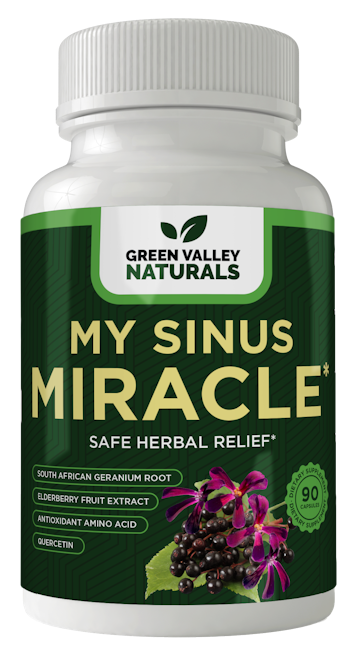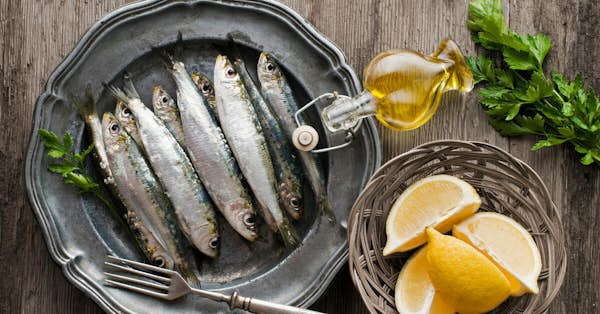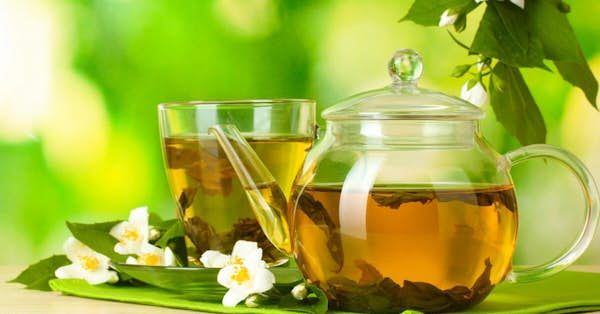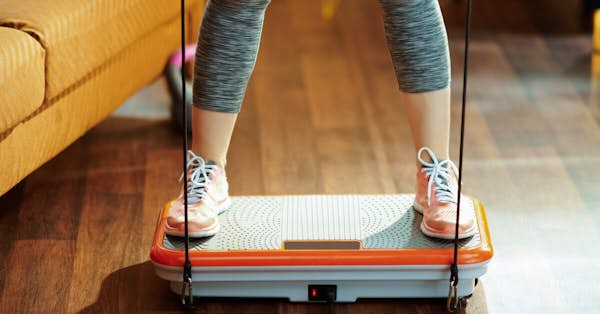
Before pushing the panic button, know that feeling a little feverish means your body’s immune system is doing its job.
Fever is one of the body’s most effective ways of fighting infection. That fever you’re feeling is triggering a number of internal processes that target bacteria and germs. So, before you run to the medicine cabinet for common over-the-counter fever reducers, there are some natural strategies that can soothe your fever gently, letting your immune system do its important work.
Fever Basics
The average normal body temperature is 98.6° Fahrenheit or 37° Celsius—it actually varies a little, from 97.7 to 99.5 F. In medicine, a fever is defined as a temperature of 100.5° F or higher. When you’re sick it’s easy to forget that fever is a critical part of the body’s immune response.Dr. Donald Ford of the Cleveland Clinic put it this way, “We tend to think of a fever as something bad that we want to bring down—it’s very uncomfortable. But the funny thing is it’s our own body starting to fight off what’s invading us.”
Dr. Ford continues, “If a virus gets into our system, it’s in the mucus membranes and it starts to show up in the bloodstream, and our immune system releases inflammatory chemicals that increase the heat in the body and increase our core temperature, part of what happens is that it makes it very uncomfortable for the virus to live. So we’re literally trying to cook the virus out of our bodies.”1 This process triggers a chain reaction in your body that can include chills, muscle aches, sweating and weakness. Really, a fever affects every part of your body.
"Your heart rate gets faster and everything responds to a faster pulse," says Dr. Deborah Nunziato-Ghobashy. "The kidneys have to work harder because the pulse is faster. You start to eliminate waste products faster. Everything is moving along at a faster rate due to your metabolism speeding up."
This is why a fever can leave you at high risk for dehydration, and you must remember to drink water throughout the day as well as electrolyte replenishment beverages such as Gatorade, Pedialyte, or bone broth to replace minerals lost through sweating and urination. More on this in a minute...
What To Do (and Not Do) For a Fever
If your temperature increases by as much as four degrees above normal to reach 102° F, it isn’t usually cause for concern. According to the Mayo Clinic, for an adult, a fever may be uncomfortable, but usually isn't a cause for alarm unless it reaches 103° F (39.4° C) or higher.2 Here are some tried and true ways for adults to address fever and support the body’s healing process.- Take a bath in lukewarm water - not cold! Don’t try to bring a fever down rapidly by submerging your body into cold or icy water. This sends blood rushing toward the internal organs, which is how your body defends itself against cold. As a result, you’ll actually increase your core body temperature instead of bringing it down. If you’re not feeling well enough to get into the bathtub, try a sponge bath focusing on high-heat areas such as your armpits, back of your neck and groin.
- Use a cool washcloth compress. When you’re not bathing, place cold, damp washcloths on your forehead and the back of your neck.
- Brew ginger tea. Ginger has been shown in a number of studies to treat fevers, whether it’s in dry or fresh form.3 Ginger tea is readily available and, of course, you can always make your own at home using sliced ginger root, which sounds more appealing to me. It’s easy to do: Steep a half-teaspoon of minced ginger root in one-cup just-boiled water. Strain then drink. In Ayurvedic medicine, doctors add basil and honey to ginger tea to treat fever. To do this, boil about 20 basil leaves, then strain out the leaves. Next, add one teaspoon of crushed ginger into the strained water and boil until the solution gets reduced to half. Add a little honey and drink this tea two or three times a day for three days to get relief. A review of research found clinical evidence that basil, specifically holy basil or Tulsi, is effective at lowering fever when mixed with ginger and honey, as well as being effective against cough and bronchitis.4,5
- Make garlic “tea.” Garlic is used by natural doctors in the West as well as by doctors in Ayurvedic medicine to bring down a fever. The warm nature of garlic also promotes sweating, not to mention that garlic is anti-bacterial and anti-viral. A study published in the journal Clinical Nutrition found patients supplementing with garlic experienced fewer cold and flu symptoms (such as fever) and recovered from their illnesses faster than patients not supplementing with garlic.6 To make garlic “tea” crush one garlic clove and add to one cup of hot water. Let it rest for ten minutes, and then strain. Drink this twice a day for best results. Frankly, I don’t think I could stand the taste, but you’re welcome to try. You can also take an aged garlic supplement, which sounds more palatable.
- Brew a “sweating” tea. There are a number of other herbs that, like garlic and ginger, trigger sweating. While there’s not been clinical research to confirm their effectiveness against fever, they’ve been used for centuries to treat illness by Native Americans and other natural healers.For example, there’s elderflower, from the elderberry plant. Mix two teaspoons of the herb in a cup of boiled water and let it steep for 15 minutes. Strain out the elderflower. Drink three times a day as long as the fever continues. Elderberries – obviously a different part of the plant –are a known antiviral remedy, high in immunity-building antioxidants and shown to help with the overproduction of mucus associated with cold and flu, but I haven’t seen a claim that they reduce fever.There’s also yarrow, which opens your pores and triggers sweating. Steep a tablespoon of yarrow herb in a cup of freshly boiled water for ten minutes. Let cool. Drink a cup or two until you start to sweat.Peppermint also opens pores in the body to provide an escape route for excess heat when you have a fever. And besides that peppermint tastes good and is refreshing. Peppermint has also been shown to help an upset stomach, headache, and sinus congestion associated with cold and flu. Pour one cup of hot water over one teaspoon of dried peppermint or two teaspoons of fresh leaves. Steep for ten minutes and strain.
All three of these herbal teas can also be found in stores. - Take apple cider vinegar. Apple cider vinegar is an old folk remedy, but its fever-reducing features lack much research to back them up. However, those who use it to boost immune health swear by it. When it comes to helping fever, apple cider vinegar’s acidic nature draws heat out of the body to help bring down a fever. Mix two teaspoons of apple cider vinegar and one tablespoon of honey in a glass of water and drink the concoction at least two to three times a day for best results. Whatever its fever-reducing properties, apple cider vinegar is rich in vitamins and minerals that help replenish the body so you can avoid dehydration.
- Try rosemary at the first sign of chills. Another of the common herbs for flu, rosemary, can help with a fever during the beginning stages when you’re cold and shivering. What’s more, a review of the research published in the international medical journal Medicines shows rosemary is anti-fungal, anti-bacterial and anti-inflammatory.7 The latest research also suggests rosemary can promote brain health and enhance cognitive function.8 To make rosemary tea pour one cup of hot water over one teaspoon of dried rosemary or two teaspoons of fresh leaves. Steep for ten minutes and strain.
- Echinacea: This herb is a natural health mainstay due to its immune boosting power, and more. But it’s by no means new. In fact, archaeologists have found evidence that Native Americans may have used echinacea for more than 400 years to treat infections and wounds, and as a general "cure-all."9 I use this one myself, and I’ll swear by it. Several clinical trials have shown that those who take echinacea as soon as they feel sick reduce the severity of their cold and have fewer symptoms – such as fever – compared to those who do not take the herb. One study published in the Journal of Alternative and Complementary Medicine examined 95 people with early symptoms of cold and flu (such as runny nose, scratchy throat, and fever) and found that those who drank several cups of echinacea tea every day for five days felt better sooner than those who drank tea without echinacea.10
- Up your fluid game: It’s particularly important when you have a fever to replenish your fluids. If you aren’t drinking enough fluid this may actually worsen your fever, further exacerbating the dehydration.11 This vicious cycle will continue unless you rehydrate your body. Obviously, the best plan is to prevent dehydration from developing by drinking plenty of water and other fluids at the first sign of illness. (So for once conventional doctors are right when they tell someone with a cold to drink plenty of fluids.) You can also drink warm chicken or beef bone broth, which is naturally rich in protein and minerals like sodium and potassium to help you stay nourished and hydrated.
- Rest, rest, rest … repeat: You heard it from your mother first no doubt, and now we’re repeating it, because rest is particularly important when it comes to fevers. That mild fever is telling you that your body is working overtime to keep you from getting sicker. Therefore, it’s crucial to give your body all the time and energy it needs to go to battle for you. That means sleep… lots and lots of sleep.
If I couldn’t manage my fever naturally over the course of a few hours I would take aspirin, especially as researchers debate the potential dangers of ibuprofen. I believe aspirin is more valuable to adults now than ever before.
- https://www.rd.com/list/what-a-fever-does-to-your-body/
- https://www.mayoclinic.org/diseases-conditions/fever/symptoms-causes/syc-20352759
- https://www.sciencedirect.com/science/article/abs/pii/S097535751080077X
- https://www.ncbi.nlm.nih.gov/pmc/articles/PMC4296439/
- https://www.ncbi.nlm.nih.gov/pmc/articles/PMC2957173/#B29
- https://www.ncbi.nlm.nih.gov/pubmed/22280901
- https://www.ncbi.nlm.nih.gov/pmc/articles/PMC6165352/
- https://www.ncbi.nlm.nih.gov/pmc/articles/PMC4749867/
- https://ssl.adam.com/content.aspx?productid=107&pid=33&gid=000239&site=trihealthse3.adam.com&login=TRIHEALTH1897
- https://www.ncbi.nlm.nih.gov/pubmed/10976979
- https://www.nutritionnews.abbott/nutrition-care/illness/how-hydration-can-help-with-getting-over-the-flu/



